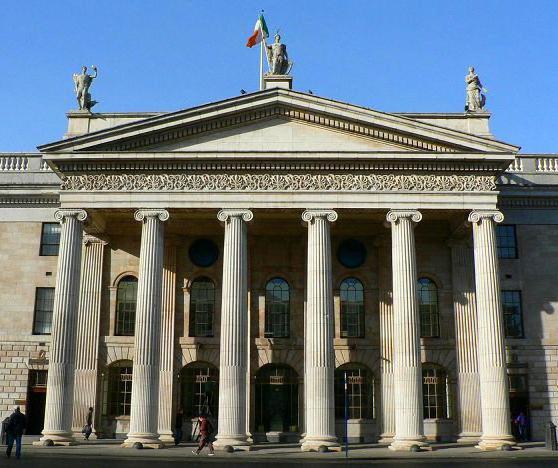Answer the question, what is a portico is quite simple. This is an architectural element used by people since ancient Greece. If you think that you have never seen him, then you are mistaken. Take a look at a modern Russian bill in denominations of 100 rubles, on the side where the Bolshoi Theater building is depicted. Eight columns pushed forward, crowned by a triangular roof, on which is located a sculpture of Apollo on the quadriga of Klodt's work - this is a portico. But about where and when this architectural element appeared, which of the famous buildings it decorates, we will try to tell in this article.
What it is?
The word "portico" comes from the Latin porticus , which means "gallery". A portico in architecture is a protruding part of a structure formed by such supporting elements that support ceilings as columns, arches or pilasters. Usually it is bounded on the inside by the wall of the building and is open on one or more external sides. Thus, this element consists of three main parts: columns, an entablature resting on them, and a pediment crowning the entire structure. What does a portico look like? The photo below demonstrates this well.

The portico was first made by ancient Greek architects. They used it not only as an architectural element, but also as a separate building. The portico was borrowed from ancient Greece and was subsequently successfully used by builders in ancient Rome. It was from there that it spread throughout the world and had a great influence on many European cultures. The portico was also known in medieval Europe, where it adorned the facades of temples and palaces. He enjoyed particular popularity in European classicism of the XVIII-XIX centuries.
Why is it needed?
Architects use this element to solve various problems:
- for registration of the main entrance to the building;
- as a compositional link between the interior and the front door;
- as the final element of the central spatial axis of the palace and park ensemble.
Kinds
Talking about what a portico is, it is important to note a large number of its types. If you do not go into architectural and constructional details, then the simplest classification is based on the number of columns used in a particular case.
Four-column, as the name implies, has four pillars. It was widely used in ancient Greek and Roman architecture in the construction of temples and public buildings. The most famous four-column portico in architecture is the northern one at the White House in the USA.
Six-columned decorated the facades of Doric buildings and religious structures of Ancient Greece, such as the Temple of Poseidon at Cape Sunia or the Temple of Concord in Agrigenta. This type of portico was also used to decorate some temples in the Ionic style, for example, Erechtheion in the Acropolis of Athens. After the colonization of the southern regions of Italy by the Greeks, the Etruscans and the Romans took over it. Today, one of the best-preserved examples of the Roman six-columned portico is Maison Carré in French Nimes. And in St. Petersburg, on the pavilions of the Admiralty overlooking the Neva embankment, you can see classic Russian examples of these architectural elements.

Octastyle is a portico of eight pillars. They were rarely used in classical Greek architecture, but such buildings with these elements as the Roman Pantheon or the Athenian Parthenon have survived to this day. This type of porticoes also includes those that adorn the facade of the Bolshoi Theater in Moscow and the building of the Synod in St. Petersburg.
Decastyle is, for example, a portico of the New Hermitage in St. Petersburg or University College in London with ten pillar columns.
Portico City - Bologna
If in all other cities and countries you need to search for buildings decorated with this element, then in Italian Bologna what a portico is, any resident knows and will gladly show you how to get to the city center. About 38 km of arcades are located only in the historical center, and covered galleries-porticoes pass through the whole city.
The story of their appearance is quite interesting. In medieval Bologna, the issue of production and retail space was rather acute. The officials of that time came up with a rather witty way out of the situation: they decided to expand the useful area of buildings by moving part of the territory to the street. In addition, the similar placement of various enterprises and industries in open areas attracted the attention of local residents and visitors. Initially, their arches were supported by wooden beams, which were then replaced by marble and stone supports. Many of them have not only architectural, but also historical value.